- TOP
- Cutting-edge Research and Social Contribution
- Energy
- What is the transportation system sparking a revolution in the skies of Japan--protecting the earth's resources by ameliorating traffic jams in the air?
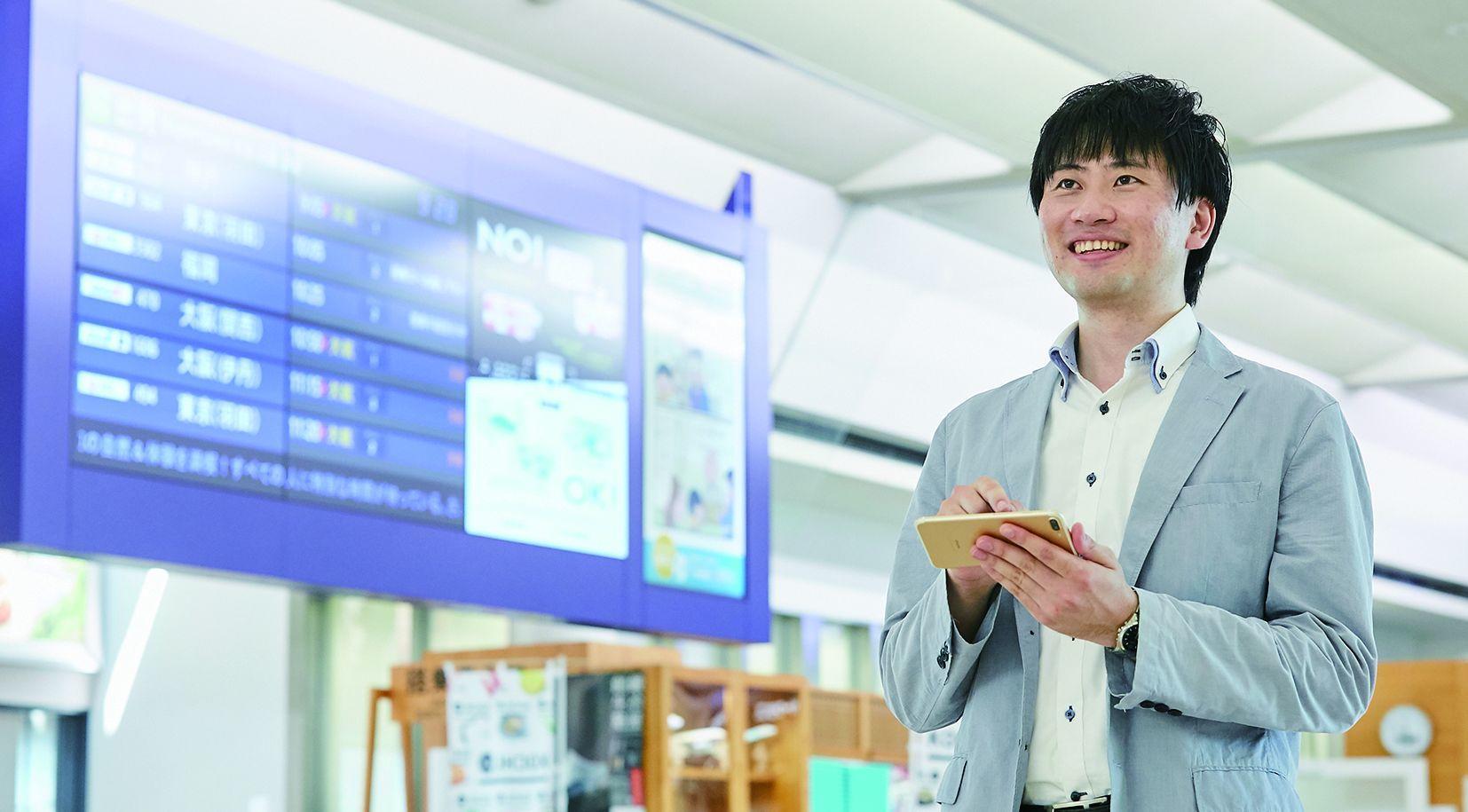
What is the transportation system sparking a revolution in the skies of Japan--protecting the earth's resources by ameliorating traffic jams in the air?
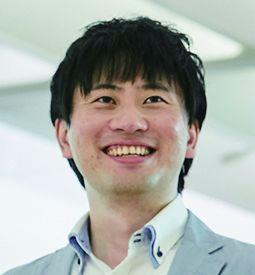
HARADA Akinori
- Specialized field
Flight Dynamics, Guidance and Control, Optimal Control, Mathematical Optimization, Air Traffic Management
Striving for both safety and economy in the skies by developing a transportation system to change the skies over Japan... Airplanes seem to be flying comfortably through the boundless skies, but did you know they are frequently caught up in traffic jams similar to those on the ground? At present, flight plans for each passenger plane are generally left up to individual airlines, which plan their flights efficiently. The situation is such that numerous airplanes gather at a single point, so to speak. At congested airports with many departing and arriving flights, traffic jams occur in the sky due to various factors, including propagation of delays, and bad weather. The people who deal with this are the air traffic controllers engaged in air traffic control (ATC) operations within the Ministry of Land, Infrastructure, Transport and Tourism. The air traffic controllers, who carry on a legacy of experience and intuition--the so-called "art" of air traffic control--have maintained safety in the airspace of Japan by issuing instructions to pilots and guiding takeoffs and landings, while keeping a close eye on moment-to-moment movements of aircraft and weather conditions. However, the problems in this area are mounting, such as the high mental burden of air traffic controllers, and the drop in economic efficiency due to congestion and delays. Associate Professor Akinori Harada comments: "If traffic demands in the airspace increase further, it will be difficult to handle with current systems. Fuel is a limited resource, and I want to develop an efficient system that helps those resources last as long as possible." He is looking at the best approach to the sky in Japan, for achieving both safety and economy.
"Why don't we change the skies over Japan?" - Entering the world of air traffic with a former professor
With the appearance of large aircraft, the world entered an era where people can literally go anywhere in one flight. However, the flip side of such easy travel is the problem of congestion and declining operational efficiency due to increased transportation demand. In recent years, R&D on air traffic management has been actively pursued both inside and outside Japan, to enable further growth and greater efficiency in air transportation.
Assoc. Prof. Harada encountered this topic about 10 years ago. In his student years, he majored in aerospace engineering at Kyushu University, and under the guidance of his former professor, who worked for many years as a senior director of research at the Japan Aerospace Exploration Agency (JAXA), he carried out research on trajectory calculations for atmospheric re-entry of the space shuttle, a vehicle he had long dreamed about. When he went on to graduate school, however, he decided to focus his research on air traffic, because his professor, who was facing retirement, said "I wonder if there is some last thing I can do at the university as a researcher." With the phrase "Why don't we change the skies over Japan," he took up the challenge of new research.
"At first, I was a little surprised at my supervisor's change of direction, but--as researchers in the engineering field--we should think about making a contribution, not just our dreams. I asked myself: What are the issues in aviation research today? and What can I do? and I found an answer," says Assoc. Prof. Harada, looking back on that time. While still at the university, he was thrilled to handle highly confidential data, such as flight data equivalent to that in flight data recorders (so-called "black boxes") and flight track data from radar for air traffic controllers.
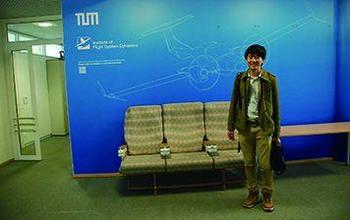
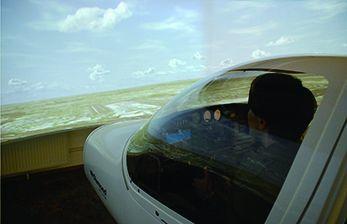
In the second year of his doctoral program, he studied abroad at the Technical University of Munich in Germany. There, he worked on detailed trajectory calculations in Flight Management Systems (FMS) as well as theoretical examination of optimality in trajectory optimization problems for producing accurate trajectories for aircraft. He learned things and gained actual experiences unavailable in Japan, such as pilot training in a flight simulator equipped with instruments and systems exactly the same as a real cockpit, and mastering new techniques for trajectory optimization calculation. He feels these studies established his foundation as a researcher.
"The point I focus most on in my research is working on actual things. Of course, theory is important and indispensable as a foundation, but in engineering research, I think the goal is to be useful in real-world society."
The key to achieving both safety and economy is "the trajectory that an aircraft wants to fly"
Since around 1950, aircraft autopilot technology has continued to evolve at dramatic speed. At present, most instrument flight is performed by autopilot, but since conditions around a flying aircraft change moment-to-moment due to the effects of weather and other factors, pilots always need correct judgment, and the vital functions of takeoff and landing are performed by human pilots. However, with today's system, where each section of airspace is partitioned and monitored, and ATC's instructions are given by voice, deterioration of efficiency will be inevitable as traffic demand increases in the future. There is a worldwide need to develop traffic management systems which automate control instructions and enable flight with greater efficiency.
At airports in the U.S. and Europe, automation is already moving forward in stages--including, for example, active improvement of efficiency in collaboration with research institutes and manufacturers, but in Japan, there seems to be little progress at the moment. "It is difficult to change the current approach, which ensures safety by relying mainly on the experience of air traffic controllers. Fuel issues due to congestion and delays are secondary. It has been thought difficult to achieve both safety and economy in the skies over Japan."
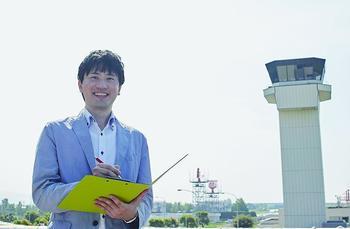
To break through the current impasse, Assoc. Prof. Harada is investigating operational methods and transportation systems that maximize performance of individual aircraft. He has conducted his research along the following lines: "My idea isn't to make big changes right away. Instead, I hope to support air traffic controllers through smooth assistance by machines, in the fashion of the navigation systems in cars."
"The performance and fuel consumption of aircraft has dramatically improved, but that's pointless if the system does not give those characteristics full play. Each aircraft has a trajectory it wants to fly. If we can determine that so-called optimal trajectory, and enable more efficient flying, it will help to reduce flight time and fuel consumption."
Reproducing the non-disclosed operation of flight management systems (FMS) and deriving optimal trajectories
Airlines fly aircraft automatically according to flight management systems (FMS) installed on board. To improve efficiency of air transport, it is essential to verify actual flight data, but that data is confidential, and not disclosed in most cases.
Thus, Assoc. Prof. Harada developed a calculation tool called "Simulated FMS" which can calculate an optimal trajectory with maximal fuel efficiency, by inputting a performance model for an airframe's engines, aerodynamics, and so forth, and weather conditions such as wind. "Almost the whole course is predetermined, but altitude and speed can be set freely to a certain degree. If trajectories are predicted, and the time of passing through fixed points can be adjusted beforehand, then congestion and delays can be improved by controlling speed during flight."
At present, he is using this tool to develop a system for the initial purpose of flying aircraft with the highest overall efficiency, e.g., by determining how to control multiple aircraft when they come together. He is trying to approach the "feel" of air traffic controllers, shrinking the range of error with actual flight, while conducting thorough computer simulations.
"I've reached the point where the difference in flight times between Simulated FMS predictions and actual data is less than about a minute and a half. But when an aircraft is cruising, it flies roughly 250 meters a second, so there is a change of one km with a difference of four seconds. I'm conducting thorough numerical analyses, and considering new approaches to see how much the discrepancy can be shortened, and what should be done to maximize precision. That's the interesting point of this research."
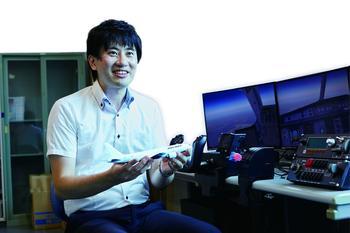
The goal is a system that will enable use of limited fossil resources for a long time
If this system for efficiently flying aircraft can be realized, it will have significance for the global environment. At the current level of technology, large aircraft have to depend on fossil fuels for power. For example, a single flight between Haneda and Fukuoka consumes roughly 6-10 tons of fuel.
Assoc. Prof. Harada has put thought into this issue: "Approximately 1,000 flights depart and arrive from Haneda Airport alone every day. Over a month, or a year, there is a tremendous difference due simply to how each aircraft flies. I want to create a system which uses limited global resources with so they can last for a long time." His research is very close to home, yet grand in scale--protecting our safety as well as the earth's resources by changing the skies over Japan. There are limits on what a researcher can do, but he is forward-looking: "If I can develop a highly-precise calculation tool, while scrupulously ensuring safety, that will be a persuasive factor. Implementation is still a long way off, but I will advance my research while exchanging information with relevant parties."
Assoc. Prof. Harada is engaged in various other research projects, such as design of abort trajectories for emergencies where both engines are out, based on the famous aircraft landing in the Hudson River. "Determining points where emergency landing is possible through simple piloting even in an emergency is one of the problems of trajectory optimization. The strongest point of machines is their delicate control, so I'm trying to develop guidance and control systems that can cope with a variety of cases. If reasonable results emerge, even exceeding our expectations, students too may sit up and take notice with their eyes sparkling" he says, softening his facial expression.
In the near future, the situation surrounding the skies over Japan will likely see major changes due to the research of Assoc. Prof. Harada.
Date of posting: February, 2023/ Date of interview: July, 2020
